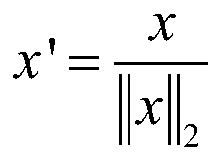radar HRRP target recognition method based on priori optimal variational autoencoder
A target recognition and self-encoding technology, applied in the field of radar, can solve the problem of low target recognition accuracy, and achieve the effect of improving the recognition rate, improving robustness and strong robustness.
- Summary
- Abstract
- Description
- Claims
- Application Information
AI Technical Summary
Problems solved by technology
Method used
Image
Examples
Embodiment Construction
[0021] The present invention will be described in further detail below in conjunction with the accompanying drawings and specific embodiments.
[0022] refer to figure 1 , for the realization steps of the present invention are as follows:
[0023] Step 1. Obtain radar high-resolution range imaging data, and divide the imaging data into a training sample set and a test sample set.
[0024] (1a) The high-resolution radar transmits electromagnetic waves to the Q-type target, and at the same time receives the imaging data x of the distribution of the scattering cross-sectional area RCS of the Q-type target along the radar line of sight RLOS, and records these echo data as the first type of high-resolution distance Imaging data, category 2 high-resolution range imaging data, ..., category Q high-resolution range imaging data;
[0025] (1b) Randomly extract P training sample sets and A testing sample sets from the Q-type high-resolution range imaging data through trajectory segmen...
PUM
 Login to View More
Login to View More Abstract
Description
Claims
Application Information
 Login to View More
Login to View More - R&D
- Intellectual Property
- Life Sciences
- Materials
- Tech Scout
- Unparalleled Data Quality
- Higher Quality Content
- 60% Fewer Hallucinations
Browse by: Latest US Patents, China's latest patents, Technical Efficacy Thesaurus, Application Domain, Technology Topic, Popular Technical Reports.
© 2025 PatSnap. All rights reserved.Legal|Privacy policy|Modern Slavery Act Transparency Statement|Sitemap|About US| Contact US: help@patsnap.com



